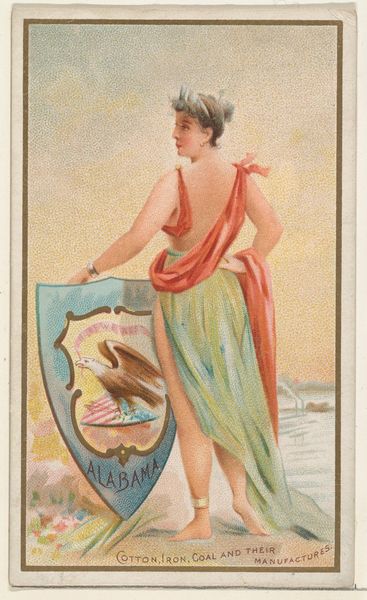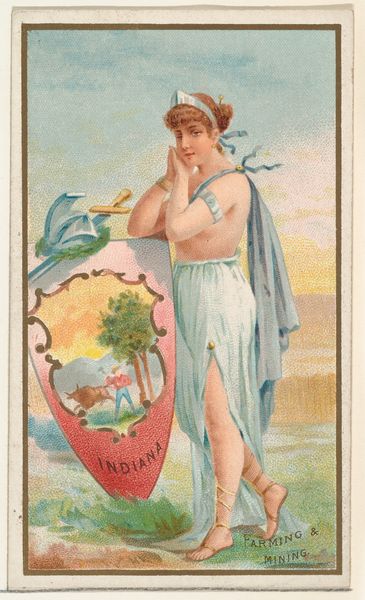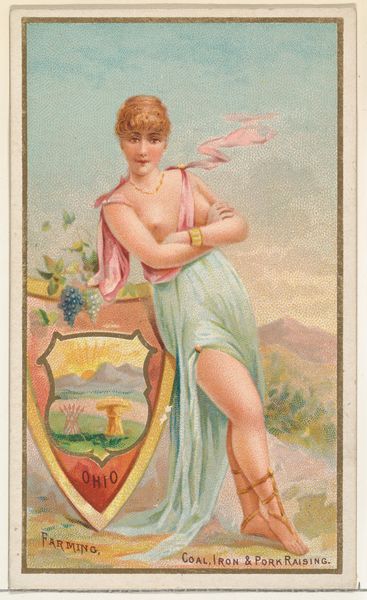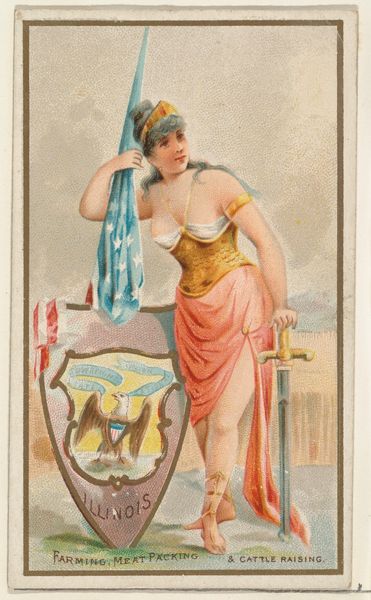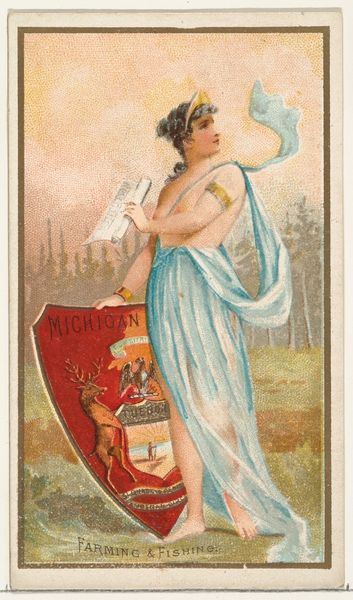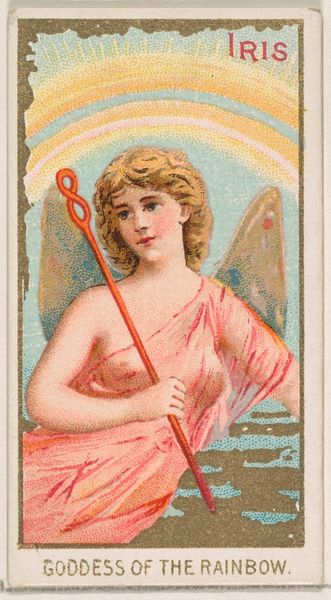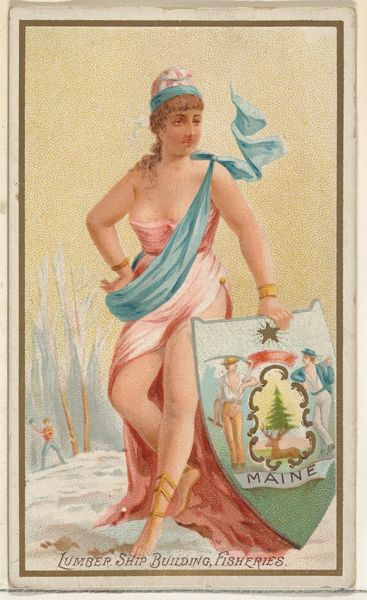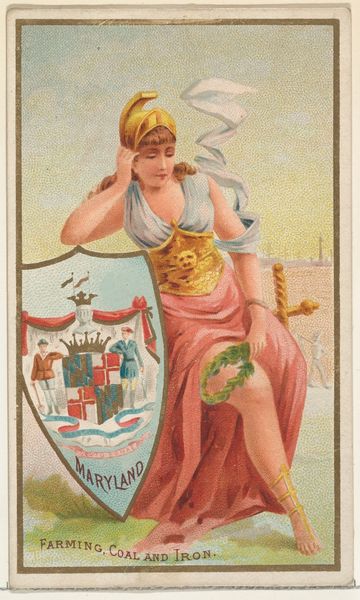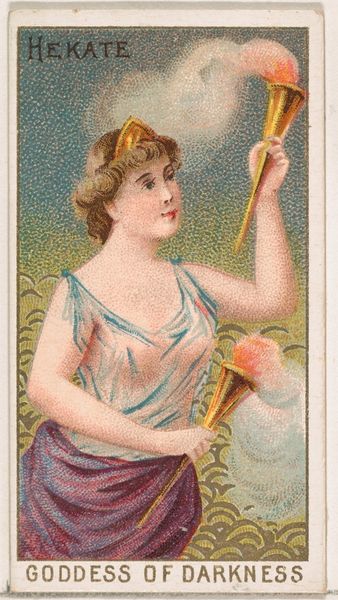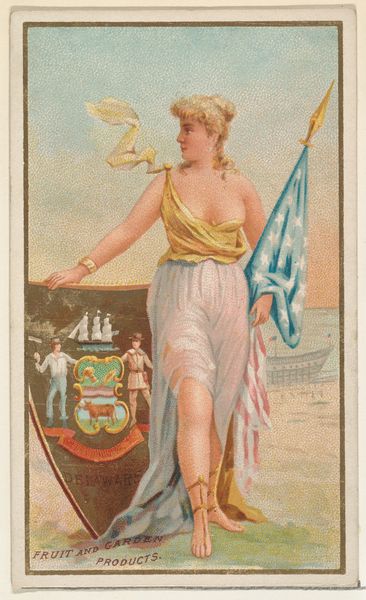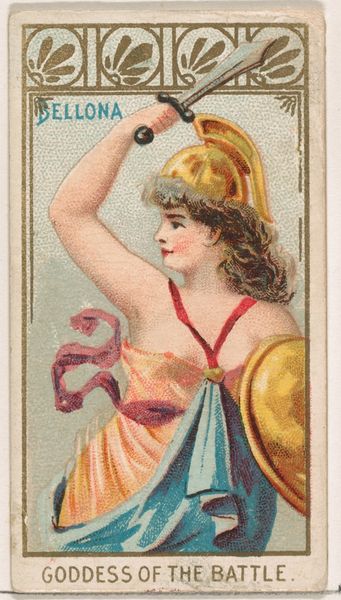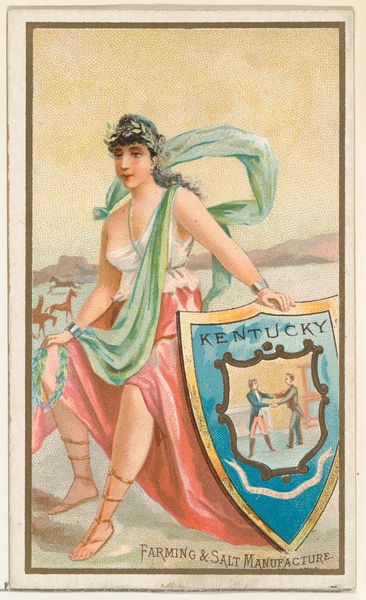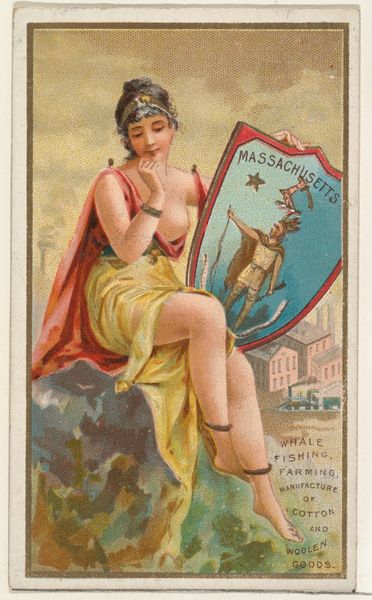
Mississippi, from the Industries of States series (N117) issued by Duke Sons & Co. to promote Honest Long Cut Tobacco 1889
0:00
0:00
drawing, print
#
portrait
#
drawing
# print
#
figuration
#
coloured pencil
#
history-painting
#
portrait art
#
watercolor
Dimensions: Sheet: 4 3/16 × 2 1/2 in. (10.6 × 6.3 cm)
Copyright: Public Domain
Curator: This print is entitled "Mississippi, from the Industries of States series," dating to 1889. It was created by W. Duke, Sons & Co. to promote Honest Long Cut Tobacco. It features a woman allegorically representing the state of Mississippi, flanked by a shield. Editor: The first thing that strikes me is that this wasn't intended as fine art. It's a trade card! How should we even approach thinking about it as something in a museum collection? Curator: Exactly! By examining it as a commodity, connected to systems of labor and consumption. Who were W. Duke, Sons & Co., and what was their Honest Long Cut Tobacco? More importantly, what was the material context that enabled the distribution of such prints, and how does it relate to the product it's selling? Editor: So you mean understanding what materials it’s made from and how widely it was distributed matters just as much, if not more, than whether it's ‘beautiful’ in the traditional sense? Curator: Precisely. These trade cards were cheap to produce and were included with tobacco purchases. Consider what’s depicted alongside the woman: "Cotton & Sugar". How do those industries intertwine with the image of Mississippi? Who profited, and who was exploited in their production? Editor: The cotton and sugar imagery, combined with the idealized woman…it seems like a glossing over of the realities of labor in Mississippi at the time. It reduces the complexities of industry to easily consumable symbols. Curator: And that’s the key! The print's materiality, its existence as a mass-produced commodity distributed to promote *another* commodity, allows us to unpack the socio-economic landscape of the era. Does analyzing it this way shift your understanding of the work? Editor: Definitely. I wouldn't have thought to analyze a trade card with this approach. I see that questioning the materials, their production, and their circulation is far more insightful than judging it based on its artistic merit alone. Curator: Glad to hear it! By acknowledging these complexities, we begin to deconstruct conventional assumptions about the art world.
Comments
No comments
Be the first to comment and join the conversation on the ultimate creative platform.
